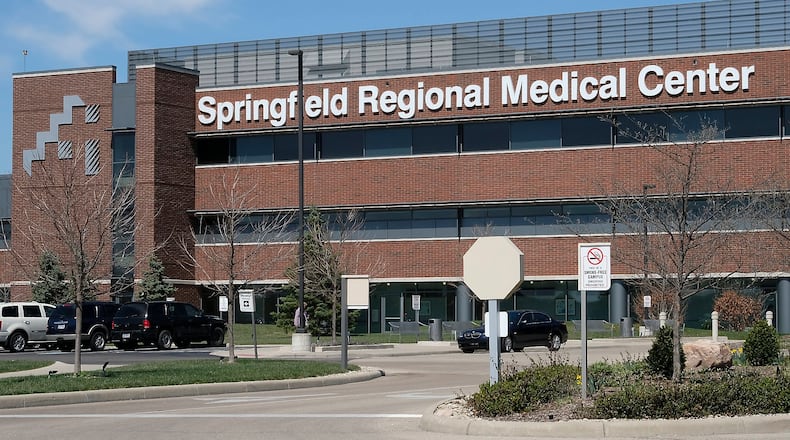He said it’s not clear which vaccine the state will receive or when in December it will be available, but the federal government is hoping to get it out next month.
The state’s first shipment is expected to include about 35,000 units. Nursing homes and health care workers will receive the vaccine first, DeWine said, and it is unlikely that Ohio will have enough vaccines in its first shipment
Ohio will then prioritize distributing the vaccine to nursing homes and health care workers initially, DeWine said. It is unlikely the state will have enough vaccines in its first shipment for anyone in the general public.
On Tuesday, DeWine announced the 10 locations across the state that will receive the vaccine once it’s given emergency-use authorization.
In Region 3 and Region 6, which make up the Miami Valley, Springfield Regional and the University of Cincinnati Medical Center were chosen.
The locations were decided based on population, geography and access to ulta-cold storage capacity. Once the vaccines get final approval, other locations will receive shipments.
Clark County Combined Health District Commissioner Charles Patterson said Springfield Regional is in the process of getting a vaccine freezer that is large enough to hold 56,000 doses.
Refrigeration space is key in the case of the Pfizer vaccine, Patterson said, because it has to be stored in temperatures greater than 70 degrees below zero.
“Right now they are working to have the refrigeration space to handle those vaccines to help us get that vaccine into Clark County as soon as possible,” Patterson said.
It’s “pretty fantastic” that the vaccine is being pre-placed in Clark County, Patterson said.
“It will be ready to go so when it’s approved, it is there and ready to go and we can begin very quickly,” he said. “It won’t be weeks or months for them to distribute it, that will have already happened.”
The Springfield News-Sun reached out to Mercy Health about the vaccine announcement and was diverted to the Ohio Department of Health for questions.
DeWine said Ohio needs to take action to reduce the current surge in cases and hospitalizations before a vaccine is available.
He hopes that a 21-day curfew, which is scheduled to start tonight, will help decrease the spread of the virus, but he noted that Ohioans still need to continue to wear a mask, reduce contact with people outside of their household and frequently wash their hands.
“It still comes back to what individual Ohioans do,” DeWine said.
Dr. Kevin Sharret, who serves patients in Kettering Health Network’s Rural Health Clinics in Jamestown and Cedarville, also stressed that people need to continue to follow health guidance and likened the virus to a fire.
“If you do have to go out, wear a mask,” Sharret said. “Other than social distancing and staying away from the fire, it is the best tool we have.”
Though hospitals are currently able to keep up with an increase in COVID-19 patients, Sharret said they are strained.
“Right now patients are being cared for,” Sharret said. “We have not exhausted resources. But let’s make no bones about it, we’re feeling the heat.”
While hospitals have the resources to care for patients, the concern is staffing, Sharret said, and health care workers are continuing to get sick, adding to the strain of increased patients.
“Without them, we can’t provide the care that’s needed for everyone else,” Sharret said.
Sharret said Ohio is in its darkest hour right now, and while Ohio will be able to get through it, he said he worries about how many peoples’ lives will be permanently changed before it is all over.
“The best thing that anyone can do is to avoid this virus and take it seriously,” Sharret said. “Because when one falls, we all fall.”


